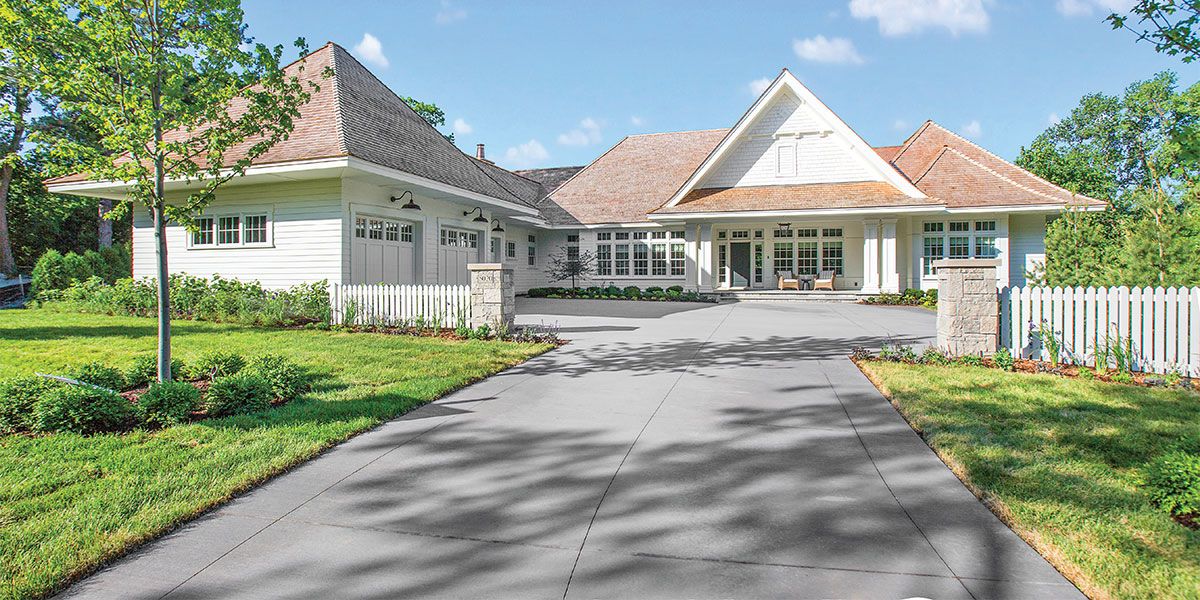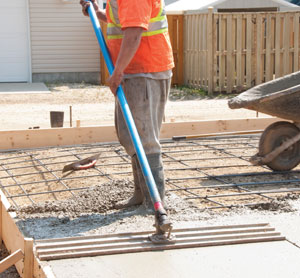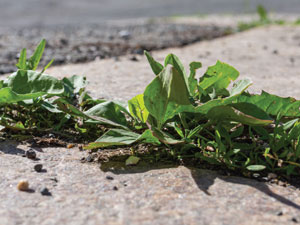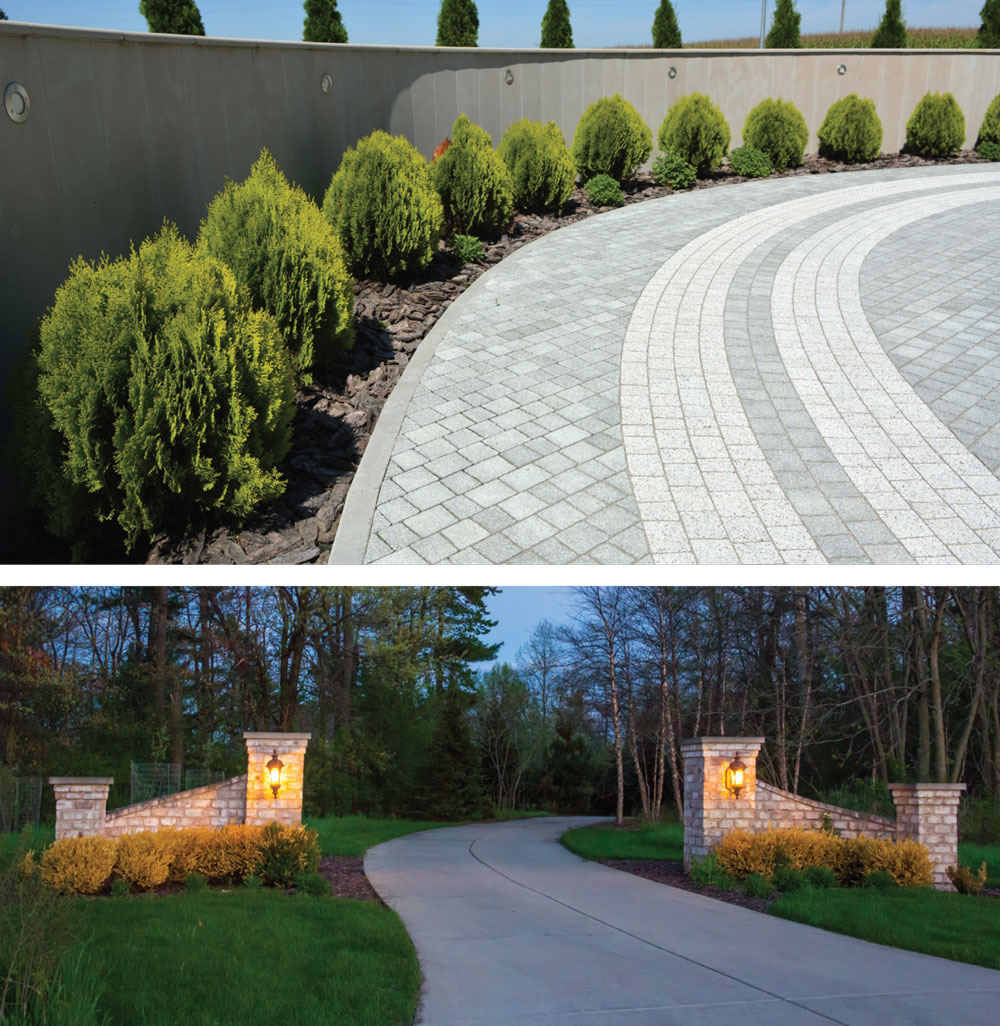PAVING THE WAY

Driveways that make an entrance
 You may pay very little attention to your driveway — until it becomes a problematic eyesore. That’s why keeping up on its maintenance is so important to the overall curb appeal and function of your home. Whether your driveway is made from asphalt or concrete, knowing how to properly care for the entrance to your home is key to a beautiful outdoor facade.
You may pay very little attention to your driveway — until it becomes a problematic eyesore. That’s why keeping up on its maintenance is so important to the overall curb appeal and function of your home. Whether your driveway is made from asphalt or concrete, knowing how to properly care for the entrance to your home is key to a beautiful outdoor facade.
Asphalt vs. concrete
First, it’s important to understand the differences between asphalt and concrete. Whether you’re looking to install something new or just want to know how to properly care for the driveway you already have, you’ll want to look into the cost, durability and lifespan of each material.
According to Owner and President of Asphalt Aesthetics John Doughton, the quality between asphalt and concrete can depend on a multitude of factors.
Asphalt is a black, sticky paving material that is composed of aggregates and a petroleum-based binder. It is generally considered the more affordable option for a driveway, with installation costing about a third of the price of concrete. Asphalt tends to be less durable than concrete, but has a good life expectancy of 25-30 years, says Doughton.
Asphalt is a great option for homeowners who aren’t looking to spend a fortune on their driveway; however, “asphalt does require some maintenance such as sealing or crack repair preventative maintenance to ensure longevity,” Doughton says.
Made from a mix of aggregates, cement and water, concrete is a highly durable and customizable option for your driveway. According to Doughton, concrete can structurally withstand compressive strength loads from vehicle traffic at a much greater capacity than asphalt of the same thickness.
Generally, concrete is about 30-50 percent higher in cost than asphalt, but can last substantially longer, from 30-50 years, when installed properly, Doughton says.
 Care & maintenance
Care & maintenance
Whether you went the route of asphalt or concrete, it’s important to know how to care for your driveway to prevent pesky cracks and stains. It’s also important to know when it’s time to seal and resurface your driveway.
According to Fortress Foundation Solutions System Designer Joe Katany, the lifespan of both asphalt and concrete depends on how well they are taken care of by the homeowner.
It’s a common belief that homeowners should seal their asphalt driveway every two years, but Doughton says that this is not true. “Asphalt does not require any sealing for at least two to four years after initial installation,” Doughton says. “This gives the asphalt binder time to evaporate from the surface leaving void space for the initial coat of sealing to adhere.”
In fact, when multiple layers of asphalt sealer are added onto a new driveway it can be damaging to the asphalt. Not allowing it to breathe “can result in full replacement if not careful,” Doughton says.
Contrary to an asphalt driveway, concrete does require sealing within the initial 30 days of pouring and commonly every two to five years after that, Doughton says.
“For concrete, if your driveway starts flaking or deteriorating, it is time to seal it to prevent any further damage,” Katany says. “If you are unhappy with the appearance of your driveway, you will need to resurface it.”
For cracks in your concrete driveway, Katany advises finding out why it has cracked.
“If it has sunk or settled, it should be lifted and leveled, and then a sealer needs to be applied to the cracks and joints to prevent water from getting underneath the concrete,” Katany says. “Non-compacted dirt and water are the biggest reasons for settled and cracked concrete.”
Less worrisome than cracks but still something you’ll want to take care of are stains on your driveway. If caught early, stains can be soaked up with cat litter, Katany says. However, “the best way to keep concrete clean is to seal the entire area so it will ‘bead’ liquids and not allow stains to be absorbed into the concrete.”
Doughton adds that it’s always good to fix whatever is continuing to leak oil on your driveway, as the petroleum will degrade the binder in both asphalt and concrete over time.
Decorative driveway options
As the gateway to your home, the driveway is the first thing your guests see on arrival. If you want an entrance that stands out and offers you a more elaborate welcome, concrete is a versatile option. 
“Concrete can be poured in many different finishes for architectural pleasing colors, shapes and textures,” Doughton says. “The only caveat to choosing a colorful or decorative concrete driveway is the future maintenance as colors fade and require routine maintenance over time.”
Some ideas to consider: adding concrete pillars to cap the entrance to your driveway for a strong, stately look. Or perhaps if you love the look of a cobblestone driveway but don’t have the means within your budget for the real deal, concrete pavers can be stamped and stained to mimic the look of cobblestone at a much more cost-effective rate.
Regardless of your style and preference of paving material, knowing how to stay on top of the care and maintenance of your driveway will help to keep your home looking fresh and functioning well. ✦
aggregates, asphalt, cement, concrete, decorative driveway, driveway, petroleum-based binder







